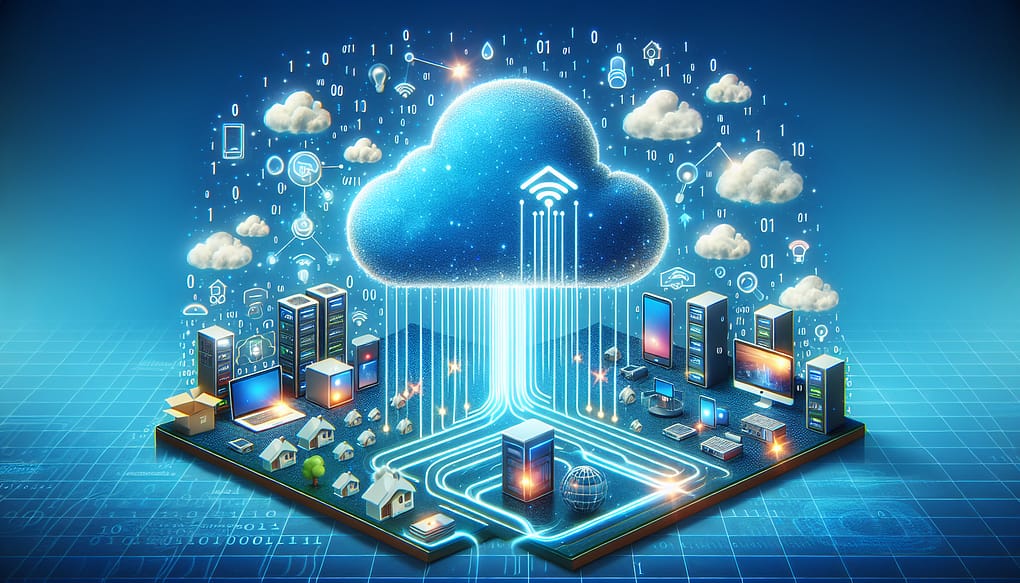Edge Computing-Jan-2025
Edge Computing: Powering the Future of IoT Efficiency
Edge AI, Real-Time Analytics, and Distributed Computing: The Future of Smart Technology
Technology is evolving faster than ever, and if you blink, you might miss the next big trend. Three key innovations—Edge AI, real-time analytics, and distributed computing—are revolutionizing the way we interact with data. But what do these buzzwords really mean? More importantly, why should you care?
Let’s break it all down in a way that won’t require you to have a PhD in data science. Don’t worry, I’ll keep it fun, light, and full of useful insights!
What is Edge AI? (And Why Should You Care?)
Imagine you’re in a self-driving car. You wouldn’t want it waiting to send data to a faraway cloud server before making a decision, right? That’s where Edge AI comes in.
Edge AI is simple: instead of sending all your data to a central cloud, it processes information on the “edge” of the network—closer to where the data is generated, like your device itself. This results in faster decision-making, less reliance on the internet, and better privacy.
Why Is Edge AI a Game-Changer?
- Speed: Since data is processed locally, responses happen in real-time. No more delays.
- Security: Less data transfer means fewer chances for hackers to intercept your sensitive information.
- Cost-Effective: Reduces the need for expensive cloud computing setups.
- Reliability: Functions even when internet connectivity is weak or unstable.
Still confused? Think of it like this—if a squirrel suddenly jumps in front of your self-driving car, you don’t want the car to wait for a response from a cloud server in another state before hitting the brakes. Edge AI processes the information immediately, keeping you and the squirrel safe!
The Power of Real-Time Analytics
Next up, let’s talk about the magic of real-time analytics. Imagine you’re running a busy coffee shop. Would you rather analyze your sales data next week or know right now which drinks are selling the most at this very moment? Yep, that’s what real-time analytics does. It helps businesses and systems process data instantly, allowing for smarter, faster decisions.
Where Do We See Real-Time Analytics in Action?
- Stock Markets: Traders use real-time analytics to make split-second investment choices.
- Healthcare: Wearable devices like smartwatches track your heart rate and alert doctors if something seems off.
- Retail Stores: Stores use real-time customer data to adjust pricing, recommend products, and improve the shopping experience.
- Traffic Management: Smart cities use live data to adjust traffic lights and reduce congestion (because nobody likes to sit in traffic, right?).
Essentially, real-time analytics prevents decision-making from feeling like that one friend who takes 20 minutes to decide what to order at a restaurant.
What is Distributed Computing?
Now, let’s talk about distributed computing. If a single computer was responsible for running the entire internet, it would crash in, like, 5 seconds. So instead, tasks are split up among multiple computers around the world. This process is called distributed computing.
Think of it like a group project—but one where everyone actually does their part (shocking, I know!). Instead of one computer handling everything, several devices work together to share the workload.
Why is Distributed Computing So Important?
- Scalability: Need more power? Just add more computers to the mix.
- Reliability: If one system fails, the others keep things running smoothly.
- Efficiency: Tasks are completed faster by spreading them out.
- Cost Savings: Distributes workloads efficiently, reducing energy consumption and computing costs.
How Edge AI, Real-Time Analytics, and Distributed Computing Work Together
Now, here’s where things get really exciting. These three technologies aren’t just powerhouses on their own—they work together in perfect harmony.
A Quick Example:
Imagine a smart factory that produces cars. Here’s how these technologies come into play:
- Edge AI: Sensors on the assembly line detect defects instantly, sending alerts to workers.
- Real-Time Analytics: Company managers monitor production trends in real-time to fix bottlenecks.
- Distributed Computing: Massive amounts of production data are processed efficiently across multiple machines.
The end result? Faster production, fewer errors, and more efficiency. And that’s just one example. These technologies are also shaping industries like healthcare, finance, and even entertainment.
The Challenges (Because Nothing is Perfect)
Of course, it’s not all sunshine and super-fast processing. There are some challenges, too.
- Data Security: Edge AI reduces risks, but any system handling large amounts of data still needs top-notch security.
- Complex Implementation: Setting up distributed systems requires expertise.
- Cost of Hardware: While cloud solutions are costly, edge computing devices also require upfront investment.
But, let’s be honest, no breakthrough technology ever came without some roadblocks, right? The good news is that companies are actively working to solve these issues.
The Future of These Technologies
So what’s next? Well, experts predict that Edge AI, real-time analytics, and distributed computing will become even more common. Here’s what we can expect:
- Smarter AI-powered gadgets in our homes (think AI fridges that know when you’re out of milk and actually order more for you).
- More automated cities, with road sensors monitoring traffic in real-time for better navigation.
- Advanced healthcare breakthroughs, with devices that predict health risks before they become serious.
Basically, the world is becoming smarter, and these three technologies are fueling that transformation.
Final Thoughts
Edge AI, real-time analytics, and distributed computing may sound like complicated tech jargon, but they’re already shaping how we work, live, and interact with the world. From making your smart devices actually smart to improving real-time decision-making, these innovations are here to stay.
And who knows? Maybe one day, AI will even help us solve the greatest mystery of all—why socks always disappear in the laundry.
Until then, keep an eye on these technologies, because they’re only getting bigger and better!

